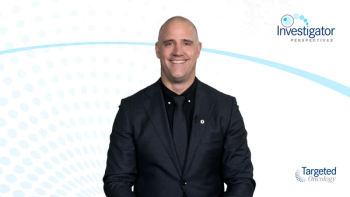
Opinion|Videos|May 28, 2025
Treatment Sequencing in Neuroendocrine Tumors
Author(s)Thorvardur R. Halfdanarson, MD
A panelist discusses how treatment sequencing for neuroendocrine tumors (NETs) is less important than ensuring patients receive all available treatments, highlighting cabozantinib as a reasonable second- or third-line option with manageable adverse effects like hypertension and liver function abnormalities.
Advertisement
Video content above is prompted by the following:
Treatment Sequencing and Clinical Pearls
Key Themes:
- Treatment Sequencing Considerations:
- Limited data on optimal sequencing
- More important that patients receive all available treatments than the specific sequence
- An Alliance trial on pancreatic NETs comparing peptide receptor radionuclide therapy with capecitabine/temozolomide closed due to poor accrual
- Recommended Positioning of Cabozantinib:
- For pancreatic NETs: Typically, third line after somatostatin analogues plus 1 additional FDA-approved therapy
- For small bowel NETs: Third line after somatostatin analogues and radioligand therapy
- For lung NETs: May consider second line due to limited effective treatments
- Management Pearls:
- Monitor for common adverse effects: hypertension, liver function abnormalities, skin rash, diarrhea
- Manage hypertension aggressively with antihypertensives
- Most oncologists familiar with cabozantinib from its use in renal cell carcinoma, thyroid cancer, or liver cancer
Notable Insights:
Dr Halfdanarson emphasized that while cabozantinib was not tested as second-line therapy, there might be situations where this approach would be reasonable, particularly for lung NETs, where treatment options are more limited.
Advertisement
Advertisement
Advertisement
Trending on Targeted Oncology - Immunotherapy, Biomarkers, and Cancer Pathways
1
FDA Approves Subcutaneous Amivantamab for EGFR-Mutated NSCLC Indications
2
Enfortumab Vedotin Plus Pembrolizumab Improves Survival in MIBC
3
FDA Grants Regular Approval to Rucaparib for BRCA-Mutated mCRPC
4
Illuminating the Sequence of Third-Line Therapies in Metastatic CRC
5








































